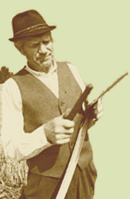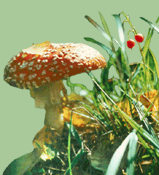What if we widen the definitions for plant and animals?
Raik-Hiio Mikelsaar takes a new and fresh look at the life tree of eukaryotes and describes one way to simplify it. He starts with an overview of the history of the life tree or phylogenesis of the living organisms. In most schoolbooks we find Bacteria as a separate kingdom belonging to the group of prokaryotes, and the kingdoms of Protists, Fungi, Animals and Plants. The rapid development of molecular biology has in recent decades strongly shaken this conception of the phylogenesis of living organisms and there is clearly a need for a new life tree. The authors ideas proposed in the article are based on the principles of phylogenetic systematics. He proposes to divide the group of Eukaryotes into two higher kingdoms Animals (Unikonta) and Plants (Bikonta), each containing organisms of both very simple and very complicated construction.
Testate amoebae the little known, but exiting protists that surround us
Eve Niinemets introduces interesting and various small creatures that look lovely under the microscope. They can most easily be found from bog peat. The article presents the structure, reproduction, feeding and moving peculiarities of the animals and their environmental needs. Besides, they are effective indicators in paleoecologic research, but can also be used in environmental changes research, i.e. to explore air and soil pollution.
Tree of the Year: Common Toothwort
Ülle Reier and Arne Sellin describe a parasite plant that prefers to parasite on the roots of the hazel tree, the tree of the year. It is a strange-looking plant with no chlorophyll content, as is typical for all parasites. The common toothwort is mostly a plant with underground lifestyle it only needs to flower on the ground in order to be pollinated and to spread the seeds.
Stinging Nettle for different tastes
Urmas Kokassaar recommends spring foods made of the stinging nettle the seemingly inedible and even a dangerous plant. It is an abundant plant, easily recognizable, with a high nutritive value. The leaves can be stored either by drying or deep-freezing. It can be used like spinach, in soups, casseroles, egg dishes, baked goods, sandwich spreads etc. The author also explains the mechanism of stinging.
Interview: The yield of a plant breeder is gathered in decades
Toomas Kukk has interviewed Kalju Kask, a plant breeder.
Estonian Nature enquires
Kalev Sepp describes the pattern of European Green Belt in Estonia.
Kaja Sepper elucidates on the amount of pesticides in vegetarian food.
Estonian gardens are threatened by an invasive species
Piret Kiristaja warns against the Spanish slug and gives a short overview of the biology of the species. If you find a specimen of the slug from your garden, you should write about your observation to teovaatlus@gmail.com.
Spanish slug: a portray
Merike Palginõmm takes a look at the food preferences and the specifics of reproduction of the Spanish slug. The Estonian Malacological Society observed the Spanish slugs in a terrarium in the second half of 2008. It appeared that they ate mostly vegetables and fruits, as well as mushrooms, and that they multiplied very fast.
The comparison of yellow slugs of Estonia
Anneli Ehlvest instructs to make a difference between yellow slugs: the yellow color does not necessarily refer to the dangerous immigrant. There are four domestic yellow-coloured slug species in Estonia, and they are all remarkably smaller than the Spanish slug. The author presents a key to determining each species.
Practical tips: Objectively about objectives or how to choose the best lens for your reflex camera
Assar Jõepera shares tips on how to find the lens that most perfectly meets the needs of the photographer. An appended table explains the abbreviations written on the lenses produced by different companies.
Work, talent and devotion. Professor Karl Eichwald 120
Hans Trass improves the article by Mati Laane published in the issue of Eesti Loodus in February with the scientific results and personal memories. Karl Eichwald is the author of about 150 scientific and popular-scientific publications. At the same time, he had not completed a high school or a university. Despite of that, his dedication and big work led to PhD degree in 1959, when he was already 70 years old.
|


![[IN ENGLISH]](images/gb.gif)





